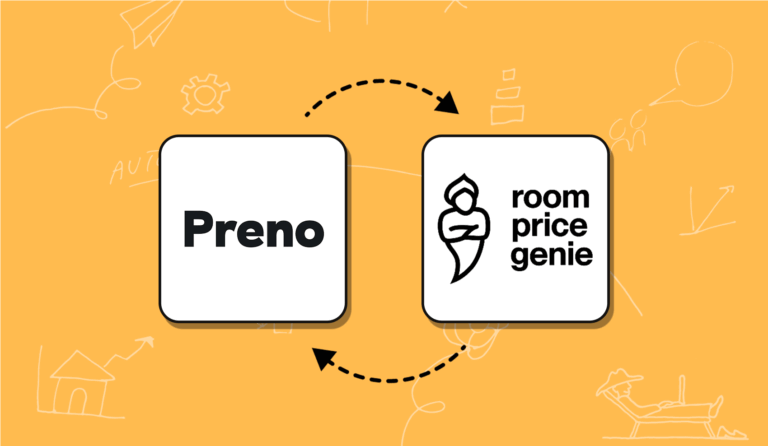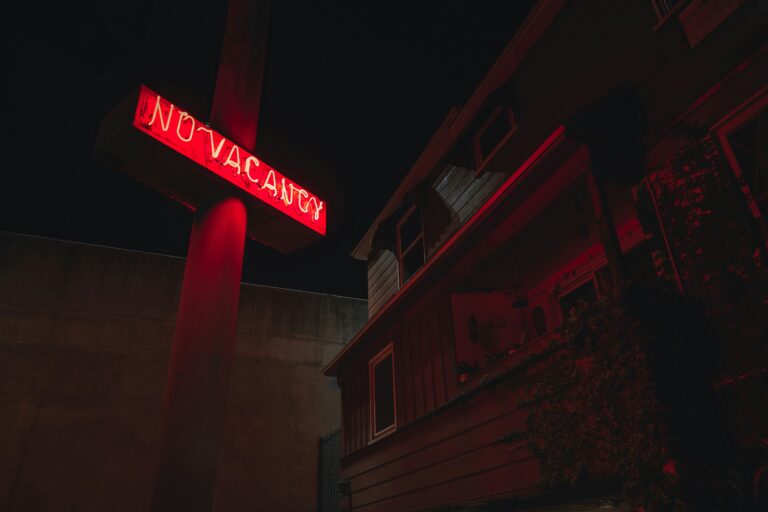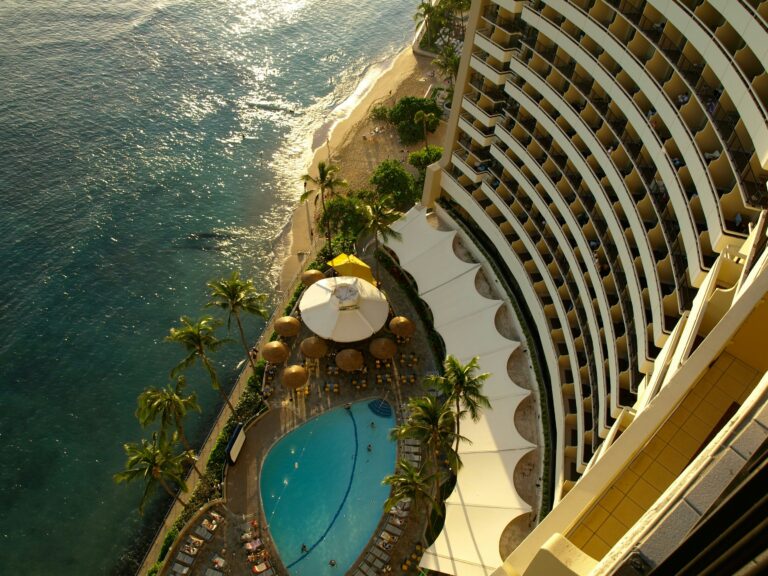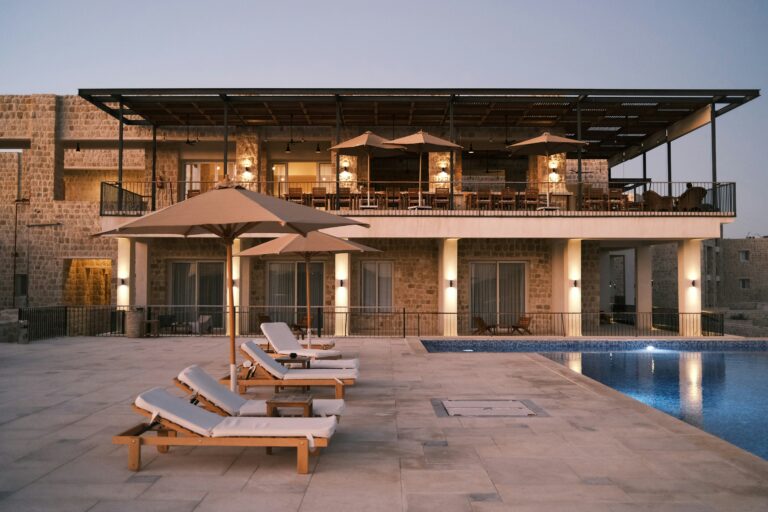As a hotelier, it’s important to understand all aspects of your business to make informed decisions that will improve your bottom line. REVPAR is one metric you should be tracking for this very reason.
RevPAR is short for Revenue per Available Room. It is a performance metric used in the hospitality industry to measure a hotel’s average room revenue generated per day. To calculate REVPAR, simply divide a hotel’s total revenue by the number of rooms available during that period.
Hoteliers focus on RevPAR because it is a good indicator of a property’s overall financial health. A high RevPAR means that a hotel is generating more revenue per room, which can lead to increased profits. Additionally, RevPAR is a good metric to use when comparing different hotels or evaluating a hotel’s performance over time. By tracking RevPAR, hoteliers can identify trends and make changes to improve their property’s bottom line.
Keep reading to learn everything you need to know about RevPAR and how you can use it to improve your hotel’s performance.
What is RevPAR in the Hotel Industry?
RevPAR is an acronym for “Revenue per Available Room”. It is a metric used in the hotel industry to measure a hotel’s revenue performance. It takes into account the total revenue generated by a hotel and divides it by the number of available rooms during a specific period. This metric is important because it provides insight into how well a hotel is performing financially.
What is the RevPAR formula?
RevPAR is calculated using the following formula:
RevPAR = Total Room Revenue / Number of Available Rooms
For example, if a hotel has 100 rooms and generates a total of $10,000 in room revenue during a specific period, the RevPAR would be $100 ($10,000/100 = $100).
Why is RevPAR important for hotel owners?
RevPAR (Revenue Per Available Room) is a crucial metric for hotel owners as it enables them to meticulously monitor and compare their property’s performance against competitors. By analyzing RevPAR, hotel owners can obtain a clear understanding of how effectively their establishment is generating revenue and identify areas that require improvement.
For instance, if a hotel’s RevPAR is found to be considerably low, it may indicate that room rates are set too low or that the property is not effectively marketing its amenities. Armed with this knowledge, hotel owners can strategically implement changes to enhance the profitability of their property.
However, it is important to note that RevPAR only offers a snapshot of a property’s performance at a specific point in time. To gain a more comprehensive assessment, hotel owners should also keep track of other significant metrics such as occupancy rate and average daily rate. This multifaceted approach ensures a well-rounded analysis of the property’s overall performance, empowering hotel owners to make informed decisions and optimize their business strategies.
ENJOYING WHAT YOU’RE READING? JOIN OUR NEWSLETTER EMAIL LIST
Join our newsletter list & receive helpful hotelier tips & tricks, industry trends & more!
What Is a Good RevPAR?
The answer to this question varies depending on several factors such as location, type of hotel, and market conditions. Generally, a higher RevPAR is considered more favourable for a hotel’s financial health. However, what may be considered a good RevPAR for one property may not be the same for another.
Hoteliers need to benchmark their RevPAR against similar properties in their market to get a better understanding of how well they are performing and identify areas for improvement.
Does RevPAR Include Food and Beverages?
No, RevPAR does not include food and beverages. It is simply a measure of how much revenue a hotel generates from room rentals. Food and beverage revenue is typically reported separately from room revenue.
What Factors Affect RevPAR?
There are several factors that can affect a hotel’s RevPAR. Some of the most common include:
- Room rate: The amount charged for a room rental.
- Occupancy rate: The percentage of rooms occupied at a given time.
- Average daily rate (ADR): The average amount charged for a room rental.
- Length of stay: The average number of days that guests stay at a hotel.
- Seasonality: The time of year when demand for rooms is highest.
By understanding how these factors affect RevPAR, hoteliers can make changes to improve their property’s performance.
How to Boost RevPAR for Hoteliers
There are many strategies hoteliers can use to increase their RevPAR. Some of the most common include:
- Increasing room rates: This can be done by analysing market trends and making adjustments to keep up with competitors.
- Offering discounts and promotions: This is a great way to attract new guests and encourage them to book direct.
- Implementing a dynamic pricing strategy: Increasing rates during periods of high demand and lower pricing during the off-season to continually fill rooms.
- Monitoring competitor rates: Use these to position your rates accordingly and to fill rooms at the highest rate.
- Improving occupancy rates: This can be done by marketing the hotel to new audiences and increasing visibility online.
- Enhancing the guest experience: This can include providing outstanding customer service, offering amenities that guests value, and maintaining a clean and comfortable property.
By using these strategies, hoteliers can increase their RevPAR and improve their property’s bottom line.
What Is GOPPAR and How Does It Compare to RevPAR?
GOPPAR is a metric that stands for gross operating profit per available room. This metric is similar to RevPAR, but it includes all operating expenses in the calculation.
To calculate GOPPAR, simply take the total revenue from room sales and subtract all operating expenses. This number is then divided by the number of rooms available. The result is your GOPPAR.
What is ADR and How Does it Compare to RevPAR?
ADR is a metric that stands for average daily rate. This metric measures the average amount that guests are paying for their rooms.
To calculate ADR, simply take the total revenue from room sales and divide it by the number of rooms sold. The result is your ADR.
ADR is a useful metric for hoteliers to track because it can help them understand how pricing changes are affecting their business. Additionally, ADR can be used to compare rates between different hotels.
Is RevPAR, ADR or GOPPAR the Key Metric for Hoteliers?
There is no easy answer to this question. Each metric provides valuable insights that can help hoteliers improve their business.
RevPAR is a great metric for tracking overall property performance. It can help hoteliers identify trends and make changes to increase revenue.
ADR is a useful metric for understanding how pricing changes are affecting the business. Additionally, ADR can be used to compare rates between different hotels.
GOPPAR is a helpful metric for tracking the property’s bottom line. It includes all operating expenses in the calculation, which can help hoteliers make informed decisions about where to allocate their resources.
Ultimately, the most important metric for hoteliers depends on what they’re looking to improve. While all of these metrics are important for hoteliers to track, REVPAR is typically given more weight when assessing a property’s performance. This is because room revenue is the largest source of income for most hotels. From there, you can use ADR and GOPPAR to make informed choices about your pricing and how you reinvest your revenue.
How a PMS Can Boost Your RevPAR
A property management system (PMS) can help increase your RevPAR in several ways.
First, a PMS can help you to better manage your inventory and pricing. By having a clear understanding of your occupancy levels, you can make sure that you are not over, or under-pricing your rooms. In addition, a PMS can help you to optimise your room rates based on demand, ensuring that you are maximising revenue.
Second, a PMS can help you to increase your direct bookings. By offering guests a seamless booking experience and providing them with the ability to easily view room availability and rates, you can encourage more direct bookings. This can help to increase your RevPAR by eliminating the need to pay commissions to third-party booking sites.
Third, a PMS can help you to reduce your costs. By automating tasks such as invoicing and payments, you can free up time to focus on other areas of your business. In addition, a PMS can help you to better manage your property, resulting in reduced maintenance and repair costs.
Overall, a PMS can be a valuable tool for increasing your hotel’s RevPAR. By helping you to better manage your inventory and pricing, increase direct bookings, and reduce costs, a PMS can help you to boost your bottom line.
Transform Your Guest Experience With Preno
With Preno, seamless management is just a click away. Embrace the future of hospitality with our free trial, no strings attached.
Sign up to Preno today for free and gain access to multiple PMS tools that will help you increase your RevPAR.





